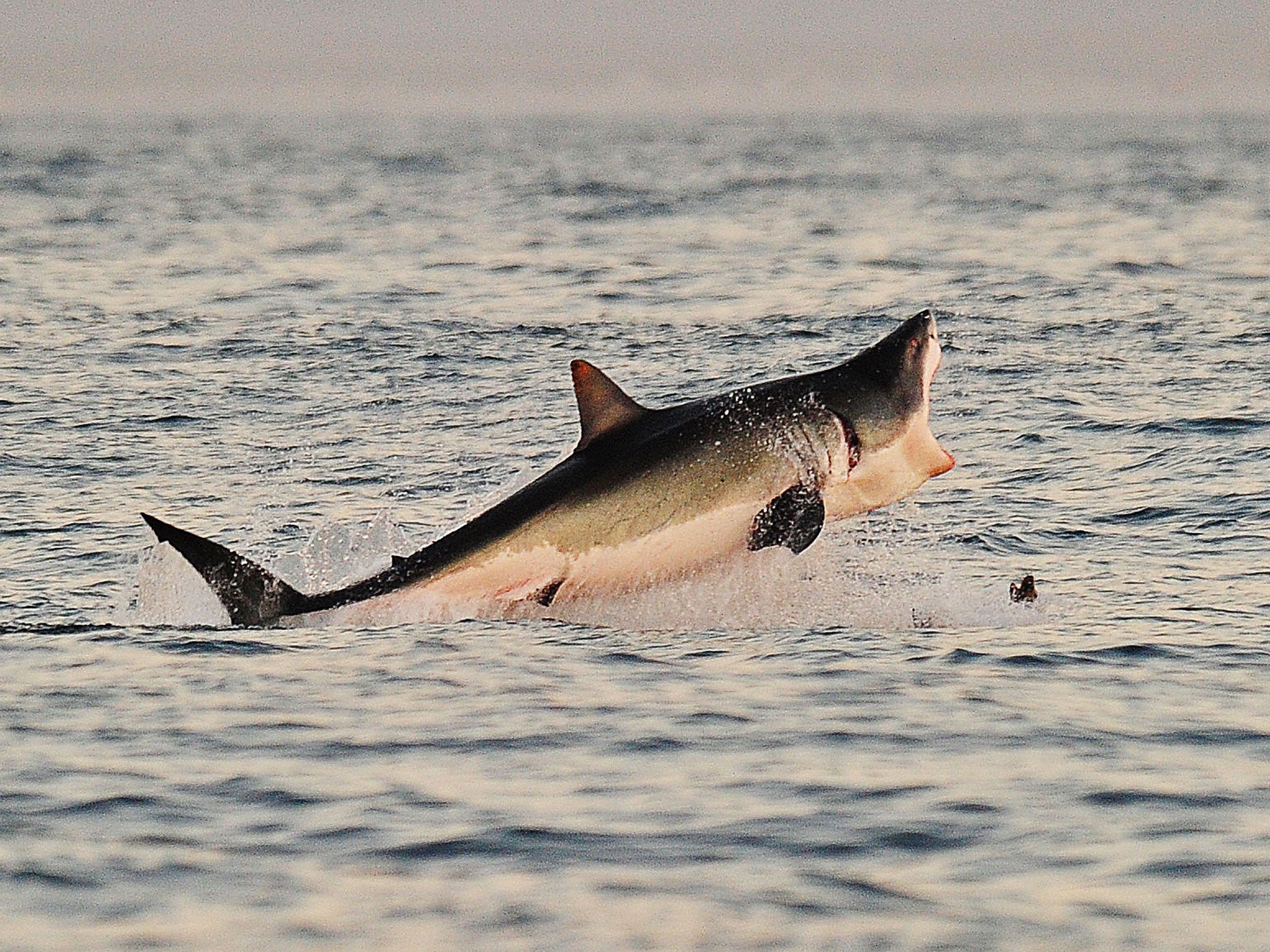One white shark, a whole lot of questions
No one knows where Lydia the shark is headed

A great white shark is headed in the UK’s direction, but even better than that – according to the pundits it’s a great white mummy, in the family way. In fact the scientific value of this observation doesn’t need any spin or speculation. The real significance is that we are watching, in real time, the movement of a top ocean predator as it searches the North Atlantic for food and possibly a mate – or a place to drop its as-yet unborn pups.
The information returned by her satellite tag (a miracle of miniaturised modern technology) can tell us a massive amount about how white sharks use the oceans. The distances between turns she makes can give us information about where she might be feeding: tighter more frequent turns or dives suggest she is finding prey, longer straighter tracks and deeper dives that she is on the hunt for more prey.
Great white passport
But where is she headed? If you believe Lydia is pregnant and if you also believe that Atlantic white shark birthing grounds are in the Mediterranean – a belief enshrined in folklore about white sharks – there is an obvious answer. But our genetic research on white sharks indicates that they, like the humble and less toothy salmon, return to their own birth place to drop their pups. We know this because the genetic signature of female sharks is characteristic of different geographic localities – a bit like a great white passport, identifying each individual’s home town.
We also know that the signature we find in the rare, contemporary Mediterranean white sharks is very different to that of North Atlantic white sharks, but very similar to Australian whites. In fact this genetic signature suggests that the ancestors of modern Mediterranean white sharks probably came from Australia some 450,000 years ago, when at least one, or possibly a few, made a navigational blunder of epic proportions.
The climate back then was interglacial (between ice ages) and the combination of sudden warming and giga-gallons of freshwater hitting the oceans upset the balance of normally constant ocean currents. Indo-Pacific white sharks today commute between South Africa and Australia, perhaps using ocean currents as signposts. But during interglacials the powerful warm Agulhas current running south down the east coast of Africa became so strong it spun huge spirals of warm water round the tip of the continent north into the Atlantic.
Through the back door
This might have effectively moved the commuters’ signposts, encouraging them to head north along the west African coast, eventually playing out their tendency to turn east by entering the Mediterranean. Oceanographically similar to the Pacific (warm, deep and salty) this might have been an acceptable new home for Pacific sharks. It has certainly proven so for more recent colonists from that part of the world, entering via the back door of the Suez Canal. So common is this phenomenon it is called Lessepsian migration, after the canal engineer Ferdinand de Lesseps.
White shark pups born in the Mediterranean would have considered it home, eventually giving birth there themselves. Modern populations may even confine themselves to the Mediterranean, doing all the things other white sharks do in the oceans in this small sea. Such confinement might explain why the largest (and yes pregnant) great white ever recorded was caught off Malta; it might also explain records of Mediterranean pups.
But is a small pond really where a big fish would live by choice? Perhaps. So far, a sad and rather worrying revelation from our work on Mediterranean white sharks is their genetic invariance and apparent lack of interbreeding with their Atlantic cousins. This dearth of diversity makes them incredibly vulnerable to environmental change, disease and pollution – things the Mediterranean has in abundance. If Lydia wasn’t born there, it’s hard to imagine why she’d be headed there.
So where is Lydia heading?
Neither I, nor anybody else, really knows where Lydia is headed. Perhaps it’s the Bay of Biscay, an area frequented by great whites. As relatively few satellite tags have been attached to Atlantic whites this may even be a common route. She’s just turned westward, away from the UK, but she could turn back east.
She may enter the Mediterranean, she may even be pregnant. But the genetics suggest she won’t give birth there – not unless she is actually a Mediterranean female who has gone walkabout, perhaps finding a Latino lover off the Americas. Now that would be a story.
Not only would it suggest Mediterranean white sharks are genetically more viable, and so less threatened, it could tell us a lot about the commute of northern hemisphere white sharks, how they use the seas and oceans. This is what conservationists need to know in order to protect them. How can we work this out? Simply by checking Lydia’s genetic passport.
Leslie Noble has received funding from Save Our Seas Foundation.
This article was originally published on The Conversation. Read the original article.

Join our commenting forum
Join thought-provoking conversations, follow other Independent readers and see their replies